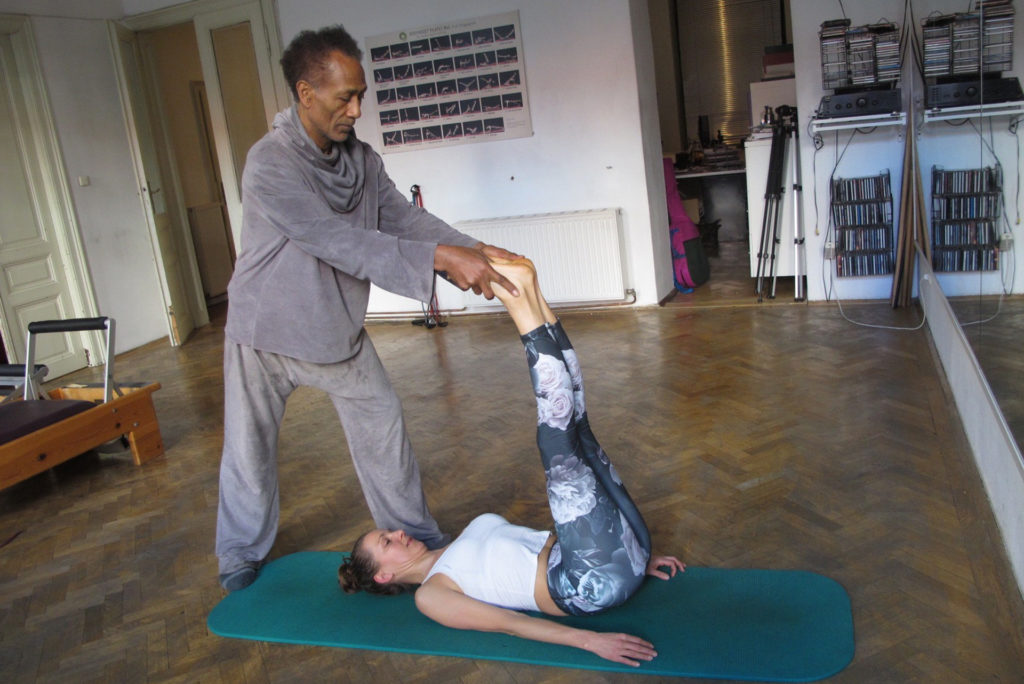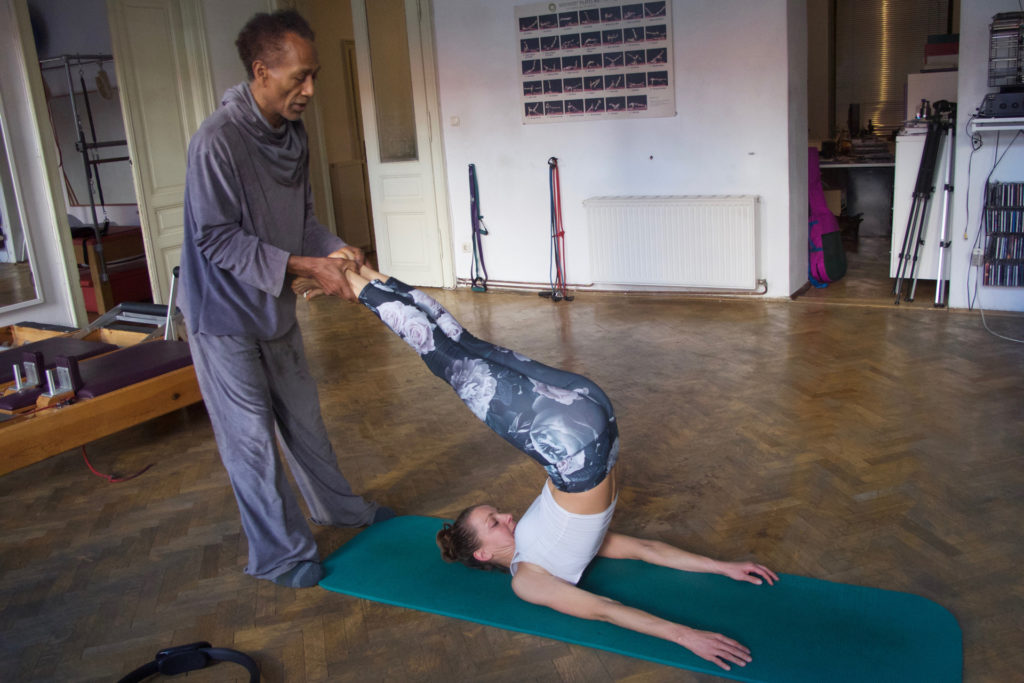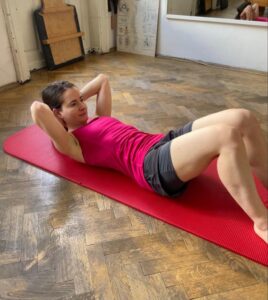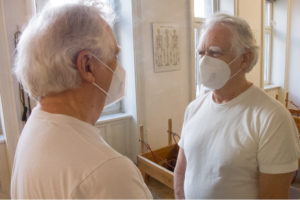The influence of the Hundred Exercise on the Roll Over
How do we get our legs flowing in the air? Where is the source of movement in the Roll Over? Let’s learn to understand the source of the Pilates Roll Over perceptively. With partner support, we move fluidly from the Hundred Exercise into the Roll Over. Let’s watch now how we can flow from the Hundred to the Roll Over in our 40-second video!
Exercise execution vs. perception
The challenge of the Pilates Roll Over is to perceive the lifting of the legs. The problem is that especially inexperienced Pilates students drop their legs towards the chest. Instead of rolling the legs ‘over’ the head and body – they rather roll them ‘under’.
This happens for a very simple reason. The focus is more on the execution of the exercise than on the perception of what needs to be done. As a result, the movement of the legs is not connected to the work of the corset – our body centre.
How do we maintain the connection to the corset when moving our legs? … because only this way we can perceive and achieve the effortless lifting of our legs over our body and head.
Maintaining the connection between our pelvis and chest
The Pilates Hundred will help us. As we move fluidly from the Hundred to the Assisted Roll Over, we learn to become aware of where the work is that our body needs to do. Yes, exactly! The work is in our power engine, because our power engine connects our pelvis to our chest.
How the Hundred exercise helps us maintain the connection from our pelvis to ribcage? Believe it or not! The flapping of the arms in the Hundred exercise is the key. Because flapping the arms acts as the necessary opposing force. Flapping the arms helps connect our ribcage to our pelvis. The flapping of the arms so supports our power engine – powerhouse – and the lifting of our legs;)
Especially Pilates beginners experience a noticeable ease in lifting the legs through the assisted transition from the Hundred exercise to the Roll Over. The negative resistance – the heaviness of the legs – which comes from dropping the legs towards the chest during the lift is eliminated by this trick.
DIY – Perception is the new reality
Now to you. Try the Assisted Roll Over as presented in the video with a partner or friend and then do it again on your own. See what you discover. You may want to answer the following 2 questions:
- How has your perception of the Roll Over changed as a result of the Assisted Roll Over with your partner?
- What perceptual knowledge do you get from the Assisted Roll Over that you can also use in other Pilates exercises?
The focus is on the perception and not on the doing! As Bob Marley said, and here in my words: “The one who feels it knows it!”
Try it & fly with it!
Did you like our blog post? Then kindly support us and share it on social media sites like Facebook, Twitter, group forums, blogs and – all the retro way – personally among friends. We also highly appreciate your feedback on our exercises and posts.







